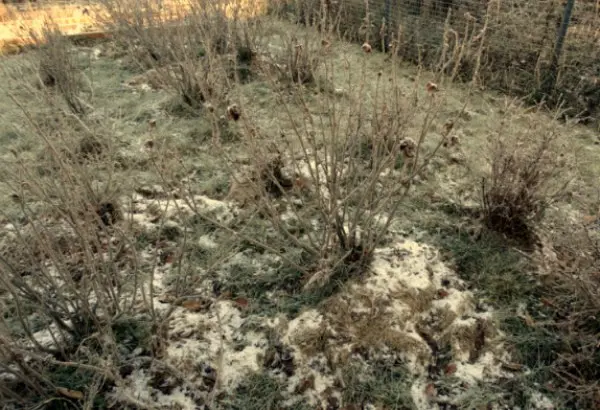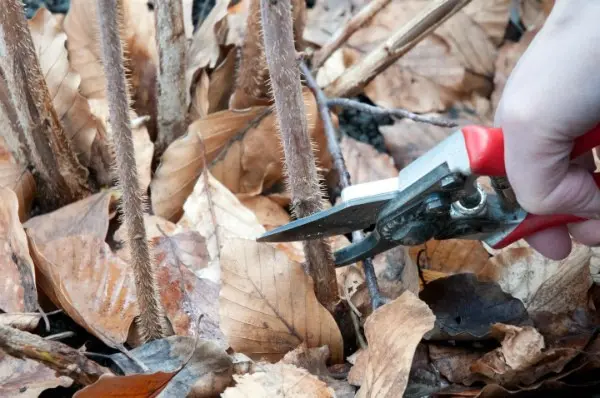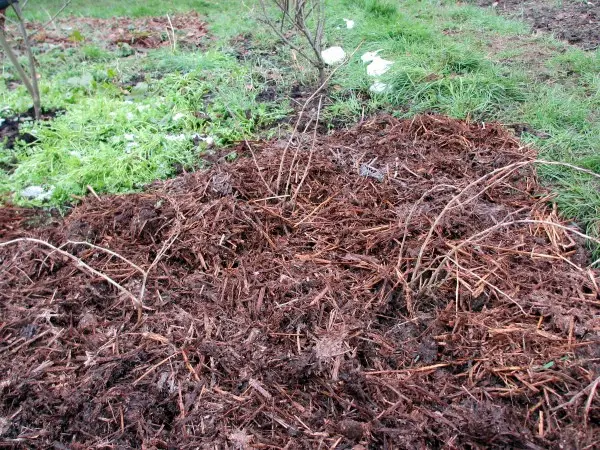Contents
Fall is a busy time for gardeners. This period is devoted to harvesting, preparing plants for winter, cleaning the site after a long season, disinfecting and healing procedures for all living things in the garden and in the garden. In this article, we will look at how gooseberries are cared for in the fall, when to carry out and how the bushes are prepared for winter.
Autumn Care
The annual increase in yield is one of the key tasks and, probably, the main desire of gardeners around the world. Gooseberry care in the fall is primarily aimed at supporting the plant after harvest and helping it gain strength before hibernation. Moreover, gooseberry bushes need to provide a favorable habitat so as not to endanger the development of fungal and viral diseases.

First of all, it is necessary to remove the weeds that grow around the bush. As you know, weeds can contain fungal spores or nests of insects, which will grow with the advent of heat. The high resistance of pests to low temperatures makes them tenacious and endangers not only gooseberry plantings, but also all surrounding plants, since spores are easily carried by the wind. For this reason, after harvesting and falling leaves, you need to completely remove them from the beds.
Gooseberries ripen in August, therefore, the main scale of work is carried out in this month. After harvesting, the preparation of the beds for winter begins. The first step is to loosen the ground between the bushes and next to them. The aisle is dug up to the depth of a spade bayonet, but the trunk circle and the space between the bushes – no more than 10 centimeters, so as not to damage the roots.
Loosening the earth is recommended to be combined with top dressing and soil treatment with antifungal drugs. Phosphorus and potassium are used for top dressing, mixing 25 grams of each fertilizer per bush.

But in order to prevent diseases from developing, you will need the drugs “Fitosporin”, “Topaz” and “Fundazol”. Plants can be treated with these preparations not only after harvesting, but also on the eve of flowering. These are fungicides of complex action that protect gooseberries from powdery mildew, rust of leaves and shoots, anthracnose, that is, the most dangerous diseases caused by a fungus that freely move between any plants in the garden and in the garden.
After processing is completed, it is necessary to carefully water all plantings in order to saturate the plants with moisture to the maximum and prepare for pruning.
Pruning gooseberry bushes in autumn
Healing pruning of bushes is necessary in order to tone the plant, get rid of old parts that no longer bear fruit, but nevertheless take away some of the nutrient resources. In addition to the health component, pruning allows you to shape the bushes in a certain way to make it easier to care for them. From the moment of harvesting, at least a month must pass before you can begin to form a bush.
Usually pruning is carried out in September or early October so that the bush has time to recover from the damage received before the first frost.

The first step is to identify a few strong shoots that will act as fruitful next year. All other shoots must be cut. Use garden pruners and heavy gloves to avoid injury. The remaining branches must be shortened, leaving only a third of their length. Branches covered with black bark must be completely removed – these are old and almost dead parts that only harm the gooseberry. Remove branches that grow inward to keep the shrub from overcrowding and provide good access to sunlight to all parts of it next year.
Preventive pruning is also subjected to those parts of the bush that are more than 5 years old. By this age, they lose their fruitful abilities. Berries either stop forming on them, or very small ones appear with altered taste. At the same time, they take away a rather large amount of nutrients from the bush, thereby depriving the fruitful branches and shoots of the necessary nourishment.
After pruning is completed, all sections must be treated with garden pitch to avoid infection. Remember that only three large shoots can be pruned each year, as removing more is more likely to harm the plant.

Preparation for winter
As soon as the time for harvesting and pruning the bush has passed, the preparation of the plant for wintering begins directly. A few weeks before the first frost, gooseberry bushes are watered abundantly again to support after pruning. Then fertilizer is applied again, but now as mulch. Peat and humus are usually used, creating a “cushion” 10 centimeters high. This will help the gooseberries to hold out after the heat has gone and until the first snow.
If you haven’t sprayed your bushes with fungicides and insecticides after harvest, this is your last chance to spray the bushes and the soil around them.
Remember that preventive treatment of plants protects not only gooseberries, but also all other plants.
The spores of the fungus are easily carried over long distances by the wind. That is, both from the gooseberry bushes, and the causative agent of the disease can get on them. Therefore, it is important to protect the plantings so as not to leave the disease a single chance.
Video “Step-by-step preparation of gooseberries for winter”
From this video you will learn how to care for gooseberries in the fall and prepare them for winter.









